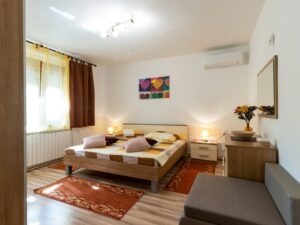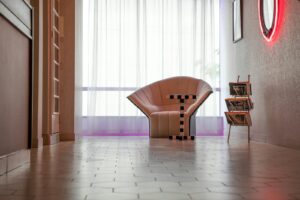Carpet flooring offers comfort, insulation, and sound absorption, making it ideal for bedrooms and living areas. However, it can trap dust, stain easily, and wear out faster in high-traffic areas. It’s best for cozy, low-traffic spaces and households without pets or allergy concerns.
Choosing carpet flooring is like picking out a couch—you want it comfy, stylish, and long-lasting, but it also needs to stand up to real life. Over the years, I’ve seen homeowners fall head over heels for plush textures, only to curse the day their kids stomped in with muddy boots. So before you roll out the red carpet (literally), let’s weigh the pros and cons, plain and simple.
Comfort and Warmth: The Feel-Good Factor
If your feet could vote, they’d go all-in on carpet. Walking barefoot on carpet feels like a hug for your toes. It adds a layer of insulation that keeps floors warmer during winter and cozy year-round. In bedrooms and family rooms, that softness can make a world of difference—especially when getting out of bed on a chilly morning.
But here’s the flip side: carpet can act like a sponge, soaking up everything from pet odors to that time someone spilled wine at the dinner party. If comfort is king, maintenance is queen—and she’s not always easy to please.
Safety and Noise Reduction: A Sound Investment
Carpet can be your best friend if you’ve got kids who run like wild horses or elderly parents who need extra traction. It reduces the risk of slips and falls and helps cushion any unexpected tumbles. It also absorbs sound like a champ, making it perfect for upstairs bedrooms, home offices, or apartments where you’d rather not hear every footstep.
On the other hand, heavy furniture leaves dents, and dragging chairs or moving couches is no walk in the park. If you’re rearranging the furniture every other week like a game of musical chairs, carpet might get on your nerves.
Style Variety: A World of Options
From Berber to Saxony, patterned to solid, carpets come in every color and style under the sun. That makes it easy to tailor your flooring to the vibe of the room—elegant, playful, relaxed, or modern.
But trends come and go. I’ve seen carpets that looked sleek in the ‘90s now look tired and outdated. And replacing carpet isn’t as easy as tossing a rug out the door—it’s a commitment, so you’ve got to love it long-term.
Maintenance and Cleaning: A Dirty Little Secret
Here’s where the rubber meets the road. Carpet is no saint when it comes to cleaning. Dust, allergens, pet hair—they all love to settle in. Regular vacuuming helps, but deep cleaning is a must every 12–18 months, especially in high-traffic areas.
If someone in the household has allergies, carpet might stir the pot. And if you’re in a home with pets or little ones, stains are bound to happen. Some carpet types are better at resisting them (hello, solution-dyed fibers), but no carpet is completely bulletproof.
Durability and Longevity: Hit or Miss
High-quality carpet installed correctly can last a good 10–15 years with proper care. But cheap carpet in a high-traffic hallway? It might look worn within a year. Carpets just don’t have the staying power of hardwood or tile.
If you’re in a “shoes off at the door” household and you keep it well-maintained, carpet can go the distance. But if you live life fast and furious, expect to see signs of wear and tear before too long.
The Final Verdict: Weighing the Trade-Offs
Carpet flooring has a lot going for it: warmth, style, safety, and comfort. But like every rose, it comes with a few thorns. I always tell homeowners: “If you want that soft-underfoot feeling, just know you’ve got to put in the TLC to keep it looking good.”
Here’s a quick table to recap:
| Pros | Cons |
|---|---|
| Soft, warm, and comfortable | Traps dirt, dust, and allergens |
| Excellent sound absorption | Can stain easily without protection |
| Safer for kids and elderly | Prone to wear in high-traffic areas |
| Wide variety of styles and colors | Requires regular maintenance |
| Adds insulation and warmth | Not ideal for wet or humid areas |





